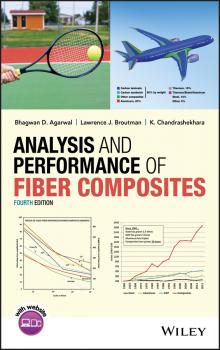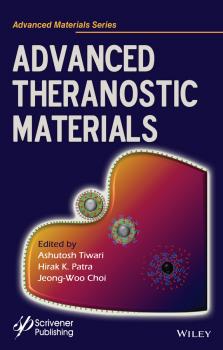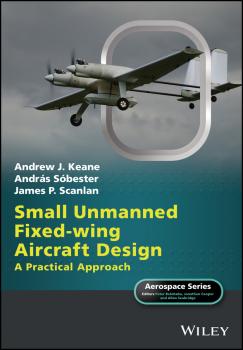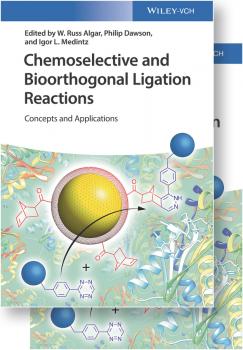ТОП просматриваемых книг сайта:
Техническая литература
Различные книги в жанре Техническая литература, доступные для чтения и скачиванияАннотация
Updated and expanded coverage of the latest trends and developments in fiber composite materials, processes, and applications Analysis and Performance of Fiber Composites, Fourth Edition features updated and expanded coverage of all technical aspects of fiber composites, including the latest trends and developments in materials, manufacturing processes, and materials applications, as well as the latest experimental characterization methods. Fiber reinforced composite materials have become a fundamental part of modern product manufacturing. Routinely used in such high-tech fields as electronics, automobiles, aircraft, and space vehicles, they are also essential to everyday staples of modern life, such as containers, piping, and appliances. Little wonder, when one considers their ease of fabrication, outstanding mechanical properties, design versatility, light weight, corrosion and impact resistance, and excellent fatigue strength. This Fourth Edition of the classic reference—the standard text for composite materials courses, worldwide—offers an unrivalled review of such an important class of engineering materials. Still the most comprehensive, up-to-date treatment of the mechanics, materials, performance, analysis, fabrication, and characterization of fiber composite materials available, Analysis and Performance of Fiber Composites, Fourth Edition features: Expanded coverage of materials and manufacturing, with additional information on materials, processes, and material applications Updated and expanded information on experimental characterization methods—including many industry specific tests Discussions of damage identification techniques using nondestructive evaluation (NDE) Coverage of the influence of moisture on performance of polymer matrix composites, stress corrosion of glass fibers and glass reinforced plastics, and damage due to low-velocity impact New end-of-chapter problems and exercises with solutions found on an accompanying website Computer analysis of laminates No other reference provides such exhaustive coverage of fiber composites with such clarity and depth. Analysis and Performance of Fiber Composites, Fourth Edition is, without a doubt, an indispensable resource for practicing engineers, as well as students of mechanics, mechanical engineering, and aerospace engineering.
Аннотация
"There should not be a practitioner who does not have a copy … highly recommended." —Arbitration When first published, The Arbitration Act 1996: A Commentary was described by Lord Bingham as «intensely practical and admirably user-friendly». It remains the most readable, useful, practical and user-friendly guide to the Arbitration Act 1996. The courts – particularly the Commercial and the Technology & Construction Courts – continue to grapple with many questions relating to the Act, with many judgments reported since the previous edition was published. While many of these do not add to the wisdom on this legislation, for the fifth edition the authors have considered some 330 new cases, resulting in extensive changes throughout much of the commentary. Many of the cases going to court concern challenges to awards and as a result the commentary on the relevant sections of the Act (ss. 67, 68, 70 and 72) has been subject to very substantial revision indeed. The details of all of these changes are of great importance to practitioners, whether lawyers or arbitrators. In addition there have been some significant changes to the Model Law since publication of the previous edition, which are fully documented and commented upon. Alterations to the CPR, the new UNCITRAL Rules (2010), the new ICC Rules (2012) and the new ICE Arbitration Procedure (2010) are also covered. Written by three practising arbitrators, the fifth edition continues to be the essential handbook for all concerned with English arbitration.
Аннотация
Chemesthesis are the chemically initiated sensations that occur via the touch system. Examples in the mouth include the burn of capsaicinoids in chilies, the cooling of menthol in peppermint, and the tingle of carbonation. It is physiologically distinct from taste and smell, but is increasingly understood to be just as important as these senses for their contribution to flavor, especially with the sustained growth in interest in spicy foods from around the world. Chemesthesis: Chemical Touch in Food and Eating surveys the modern body of work on chemesthesis, with a variety of contributors who are well known for their expertise on the topic. After a forward by John Prescott and an introduction by Barry Green (who originally coined the term chemesthesis 25 years ago), the book moves on to survey chemesthetic spices and address the psychology and physiology of chemesthesis; practical sensory and instrumental analysis; the interaction of chemesthesis with other chemical senses; health ramifications; and the application of chemesthesis in food. The major types of chemesthesis, including pungency/burning, cooling, tingling, nasal irritation, and numbing, are each covered in their own chapter. The book concludes with a look to the future. This is the first comprehensive book on chemesthesis since 1990, when Barry Green and his colleagues edited a volume on the perception of chemical irritants, including those in food. This new book is intended to be a vital resource for anyone interested in the sensory impact of the food we eat, including food scientists, sensory professionals, analytical chemists, physiologists, culinary scientists, and others.
Аннотация
Gives readers a detailed understanding of adsorption refrigeration technology, with a focus on practical applications and environmental concerns Systematically covering the technology of adsorption refrigeration, this book provides readers with a technical understanding of the topic as well as detailed information on the state-of-the-art from leading researchers in the field. Introducing readers to background on the development of adsorption refrigeration, the authors also cover the development of adsorbents, various thermodynamic theories, the design of adsorption systems and adsorption refrigeration cycles. The book guides readers through the research process, covering key aspects such as: the principle of adsorption refrigeration; choosing adsorbents according to different characteristics; thermodynamic equations; methods for the design of heat exchangers for adsorbers; and the advanced adsorption cycles needed. It is also valuable as a reference for professionals working in these areas. Covers state-of-the art of adsorption research and technologies for relevant applications, working from adsorption working pairs through to the application of adsorption refrigeration technology for low grade heat recovery Assesses sustainable alternatives to traditional refrigeration methods, such as the application of adsorption refrigeration systems for solar energy and waste heat Includes a key chapter on the design of adsorption refrigeration systems as a tutorial for readers new to the topic; the calculation models for different components and working processes are also included Takes real-world examples giving an insight into existing products and installations and enabling readers to apply the knowledge to their own work Academics researching low grade energy utilization and refrigeration; Graduate students of refrigeration and low grade energy utilization; Experienced engineers wanting to renew knowledge of adsorption technology,Engineers working at companies developing adsorption chillers; Graduate students working on thermally driven systems; Advanced undergraduates for the Refrigeration Principle as a part of thermal driven refrigeration technology.
Аннотация
The present book is covers the recent advances in the development on the regulation of such theragnosis system and their biomedical perspectives to act as a future nanomedicine. Advanced Theranostics Materialsis written by a distinguished group of contributors and provides comprehensive coverage of the current literature, up-to-date overview of all aspects of advanced theranostics materials ranging from system biology, diagnostics, imaging, image-guided therapy, therapeutics, biosensors, and translational medicine and personalized medicine, as well as the much broader task of covering most topics of biomedical research. The books focusses on the following topics: Part 1: System biology and translational medicine Aberrant Signaling Pathways: Hallmark of Cancer Cells and Target for Nanotherapeutics Application of Nanoparticles in Cancer Treatment Biomacromolecule-Gated Mesoporous Silica Drug Delivery Systems Construction of Functional DNA Nanostructures for Theranostic Applications Smart Polypeptide Nanocarriers for Malignancy Therapeutics Part 2: Imaging and therapeutics Dimercaptosuccinic acid-coated magnetic nanoparticles as a localized delivery system in cancer immunotherapy Cardiovascular nanomedicine Chitosan-based systems for sustained drug release Nanocapsules in biomedicine: promises and challenges Chitosan-based polyelectrolyte complexes: characteristics and application in formulation of particulate drug carriers Part 3: Diagnostics and featured prognostics Non-invasive Glucose Biosensors based on Nanomaterials Self/directed Assembly of Nanoparticles: A review on various approaches Ion exchangers – an open window for the development of advanced materials with pharmaceutical and medical applications New Titanium Alloys for Biomedical Applications
Аннотация
A comprehensive resource to designing and constructing analog photonic links capable of high RF performance Fundamentals of Microwave Photonics provides a comprehensive description of analog optical links from basic principles to applications. The book is organized into four parts. The first begins with a historical perspective of microwave photonics, listing the advantages of fiber optic links and delineating analog vs. digital links. The second section covers basic principles associated with microwave photonics in both the RF and optical domains. The third focuses on analog modulation formats—starting with a concept, deriving the RF performance metrics from basic physical models, and then analyzing issues specific to each format. The final part examines applications of microwave photonics, including analog receive-mode systems, high-power photodiodes applications, radio astronomy, and arbitrary waveform generation. Covers fundamental concepts including basic treatments of noise, sources of distortion and propagation effects Provides design equations in easy-to-use forms as quick reference Examines analog photonic link architectures along with their application to RF systems A thorough treatment of microwave photonics, Fundamentals of Microwave Photonics will be an essential resource in the laboratory, field, or during design meetings. The authors have more than 55 years of combined professional experience in microwave photonics and have published more than 250 associated works.
Аннотация
Discusses the growth mechanisms of tin whiskers and the effective mitigation strategies necessary to reduce whisker growth risks This book covers key tin whisker topics, ranging from fundamental science to practical mitigation strategies. The text begins with a review of the characteristic properties of local microstructures around whisker and hillock grains to identify why these particular grains and locations become predisposed to forming whiskers and hillocks. The book discusses the basic properties of tin-based alloy finishes and the effects of various alloying elements on whisker formation, with a focus on potential mechanisms for whisker suppression or enhancement for each element. Tin whisker risk mitigation strategies for each tier of the supply chain for high reliability electronic systems are also described. Discusses whisker formation factors including surface grain geometry, crystallographic orientation-dependent surface grain boundary structure, and the localization of elastic strain/strain energy density distribution Examines how whiskers and hillocks evolve in time through real-time studies of whisker growth with the scanning electron microscope/focused ion beaming milling (SEM/FIB) Covers characterization methods of tin and tin-based alloy finishes such as transmission electron microscopy (TEM), scanning electron microscopy (SEM), and electron backscatter diffraction (EBSD) Reviews theories of mechanically-induced tin whiskers with case studies using pure tin and other lead-free finishes shown to evaluate the pressure-induced tin whiskers Mitigating Tin Whisker Risks: Theory and Practice is intended for the broader electronic packaging and manufacturing community including: manufacturing engineers, packaging development engineers, as well as engineers and researchers in high reliability industries.
Аннотация
Small Unmanned Fixed-wing Aircraft Design is the essential guide to designing, building and testing fixed wing UAVs (or drones). It deals with aircraft from two to 150 kg in weight and is based on the first-hand experiences of the world renowned UAV team at the UK’s University of Southampton. The book covers both the practical aspects of designing, manufacturing and flight testing and outlines and the essential calculations needed to underpin successful designs. It describes the entire process of UAV design from requirements definition to configuration layout and sizing, through preliminary design and analysis using simple panel codes and spreadsheets to full CFD and FEA models and on to detailed design with parametric CAD tools. Its focus is on modest cost approaches that draw heavily on the latest digital design and manufacturing methods, including a strong emphasis on utilizing off-the-shelf components, low cost analysis, automated geometry modelling and 3D printing. It deliberately avoids a deep theoretical coverage of aerodynamics or structural mechanics; rather it provides a design team with sufficient insights and guidance to get the essentials undertaken more pragmatically. The book contains many all-colour illustrations of the dozens of aircraft built by the authors and their students over the last ten years giving much detailed information on what works best. It is predominantly aimed at under-graduate and MSc level student design and build projects, but will be of interest to anyone engaged in the practical problems of getting quite complex unmanned aircraft flying. It should also appeal to the more sophisticated aero-modeller and those engaged on research based around fixed wing UAVs.
Аннотация
Complex behavior models (plasticity, cracks, visco elascticity) face some theoretical difficulties for the determination of the behavior law at the continuous scale. When homogenization fails to give the right behavior law, a solution is to simulate the material at a meso scale in order to simulate directly a set of discrete properties that are responsible of the macroscopic behavior. The discrete element model has been developed for granular material. The proposed set shows how this method is capable to solve the problem of complex behavior that are linked to discrete meso scale effects. The first book solves the local problem, the second one presents a coupling approach to link the structural effects to the local ones, this third book presents the software workbench that includes all the theoretical developments.
Аннотация
This timely, one-stop reference is the first on an emerging and interdisciplinary topic. Covering both established and recently developed ligation chemistries, the book is divided into two didactic parts: a section that focuses on the details of bioorthogonal and chemoselective ligation reactions at the level of fundamental organic chemistry, and a section that focuses on applications, particularly in the areas of chemical biology, biomaterials, and bioanalysis, highlighting the capabilities and benefits of the ligation reactions. With chapters authored by outstanding scientists who range from trailblazers in the field to young and emerging leaders, this book on a highly interdisciplinary topic will be of great interest for biochemists, biologists, materials scientists, pharmaceutical chemists, organic chemists, and many others.










